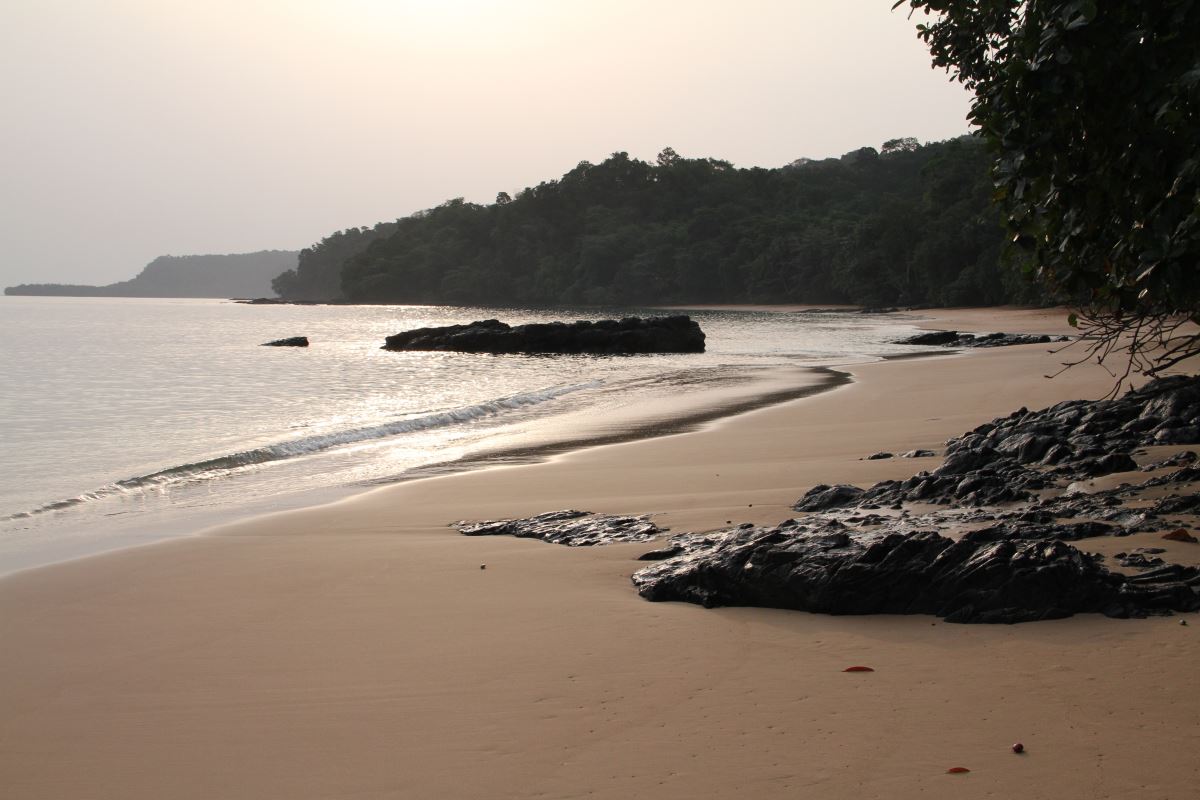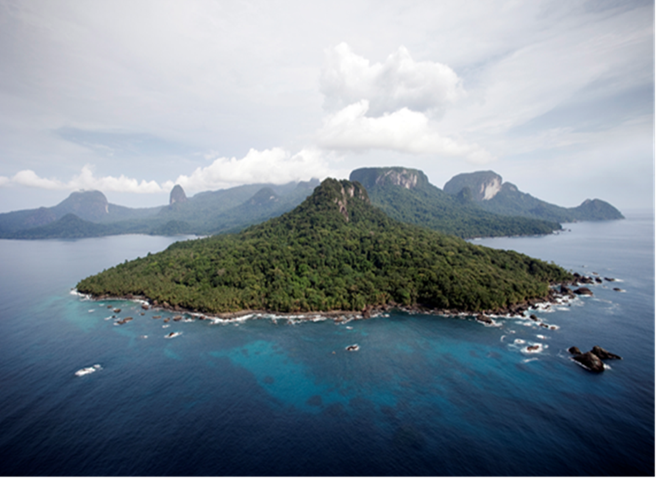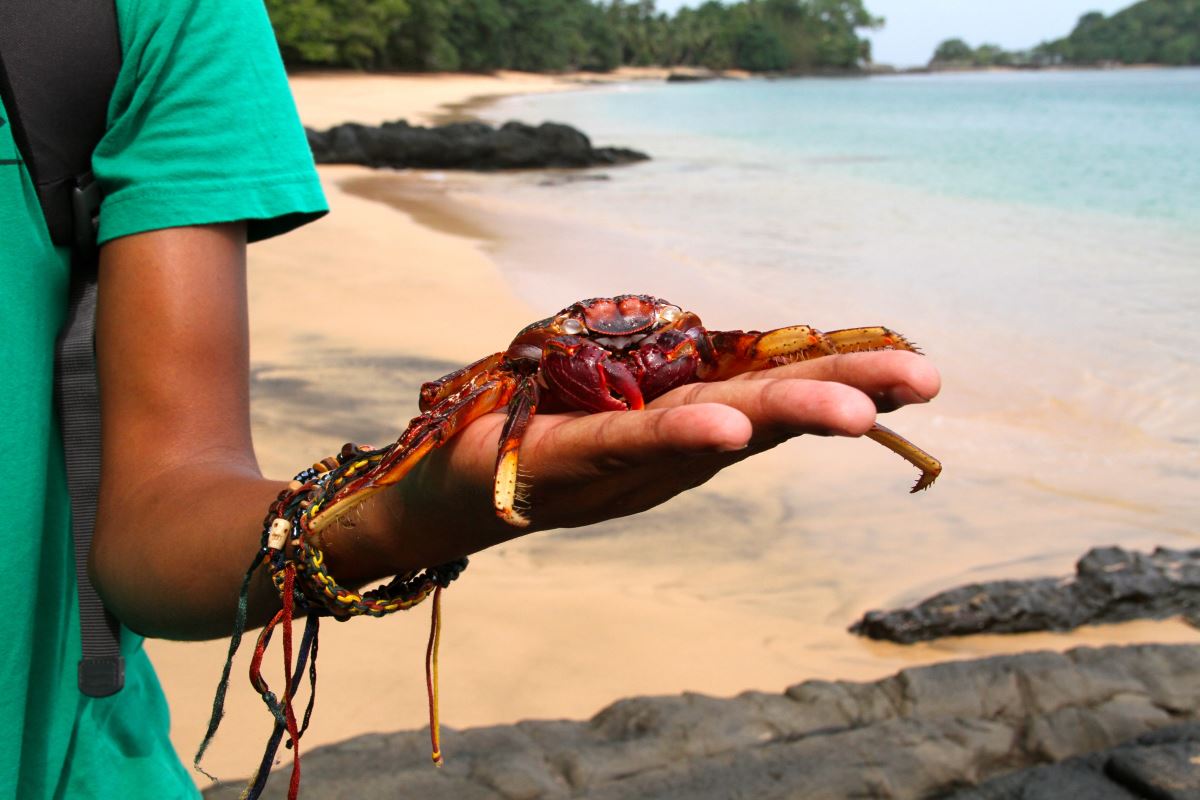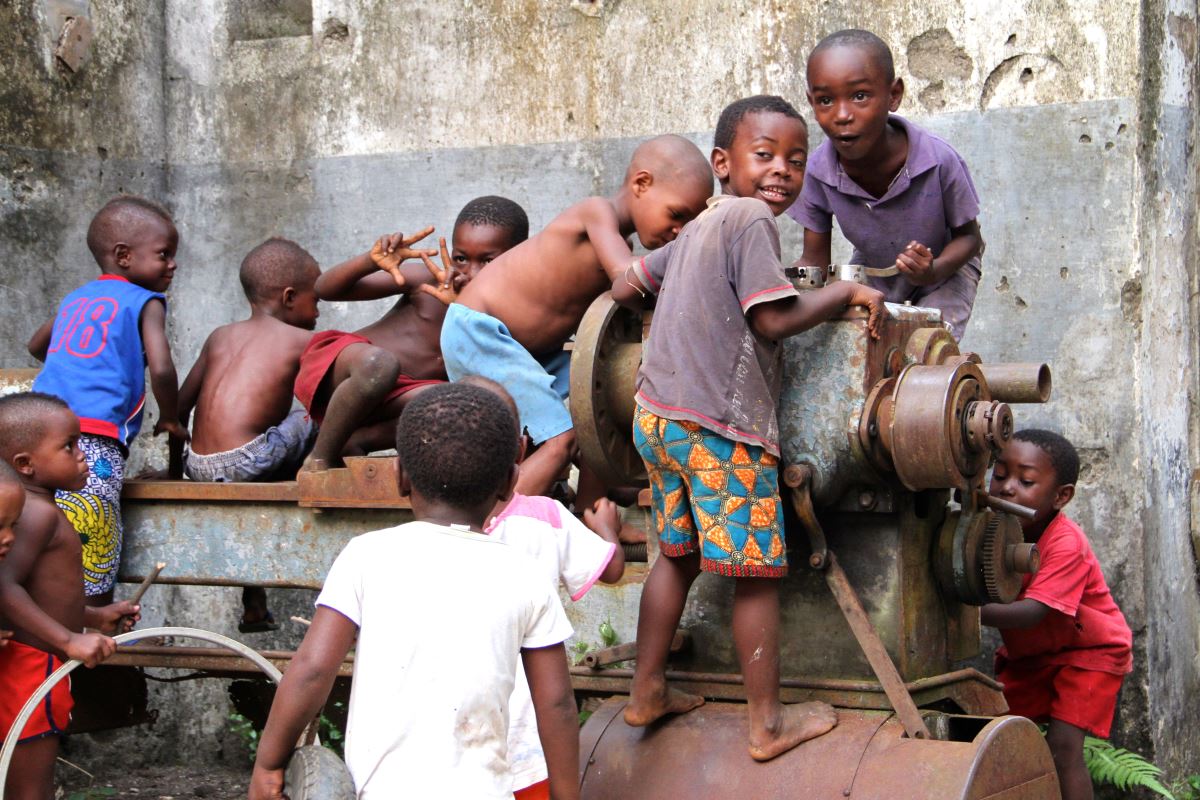
Impressions of Príncipe
Mike Unwin gets caught up in the magic of Africa’s second smallest country
"Leve, leve” implored my guide Carlos, as I stumbled and sweated up the steep hillside from the beach. This local expression, also conveniently spelt out on his T-shirt, translates as ‘easy does it’. In the sweltering equatorial humidity it was sound advice. And it struck me, as I slumped down among the huge buttress roots of an oka tree, that it was also an apt description of life on Príncipe. Nothing much seemed to happen in a hurry here.
I confess that I had barely heard of my bijou island destination before I boarded the plane. For the record, the independent state of São Tomé and Príncipe lies in the Gulf of Guinea, some 300 kilometres off the coast of Gabon. Príncipe is the smaller, more northerly and much the less populous of two main islands, home to around five per cent of the total 188,000 population.

Arriving by air – a 30-minute hop from São Tomé – ramped up the sense of adventure, as the Jurassic Park-style panorama of jungle-clad volcanoes swung into view below and we banked down to the redearth airstrip. Bom Bom Island Resort, my home for the week, lies on the northern tip of the island. With its thatched chalets overlooking two white-sand beaches, and its wooden boardwalk snaking out to a tiny islet, where the restaurant perches over a glittering reef, it had the allure of a Caribbean hideaway. But wandering the shoreline, I soon found any Caribbean comparisons fell away.
There was simply nothing else there: no water sports, marina or luxury spa, just a succession of empty crescent beaches, punctuated by steep jungle headlands. One morning’s walk led me to a small and impossibly picturesque fishing village, where the men fixed nets, perched on their dugout pirogues, while the women laid out salted flying fish on the racks and pigs rooted beneath the coconut palms. It felt utterly removed from any other world.

Naturalists have described São Tomé and Príncipe as an African Galapagos. And, as I caught my breath on that jungle headland, the archipelago’s unique biodiversity was in abundant evidence. We’re not talking Big Five here: marooned from the African mainland, large mammals are in short supply. But fauna and flora of a subtler appeal, much of it endemic, gives Príncipe a special significance.
Amid the forest greenery I watched Príncipe golden weavers constructing their intricate nests, spied Dohrn’s thrushbabblers foraging for insects among the canopy and admired the jewel like brilliance of a fly-past Príncipe Kingfisher. None of these species occurs anywhere else on Earth – and neither does the Príncipe green snake, whose elegant emerald coils slipped discreetly through the understory below me.

More familiar wildlife includes the African grey parrots that winged raucously over the forest and the white-tailed tropicbirds that wheeled around the impressive volcanic outcrop known as Jockey’s Cap. Pointing out beyond the breakers, Carlos explained that humpback whales cavort in these waters on migration. And later, when we scrambled down to the two kilometre stretch of beach known as Praia Grande, we found the amphibious landing-craft tracks of huge green sea turtles that had hauled out the night before to lay their eggs.
But Príncipe is not only about beaches and wildlife. The islands have a fascinating history, which extends from the murky depths of the slave trade – by which they were first populated – to independence in 1975. Today this story is embodied in the grand old plantation estates, known as roças (pronounced ‘hossas’, with a guttural ‘h’), of the Portuguese colonials. Each was once the centre of a thriving community.

Today they are fallen monuments of colonialism: greenery from the surrounding forest spills over their crumbling walls, as though impatient to reclaim the land, while the descendants of the old work force have now taken up residence inside.
At Roca Sundy I found the grand house still carefully preserved, part of a UNESCO heritage project that embraces the whole island. Here my guide Rita Alves, a Portuguese anthropologist working with the local community, explained how the colony grew rich on sugar, coffee and cacao, with labour imported from Angola and Cape Verde.
She pointed out the old drying kilns for the cacao pods, the stables, the hospital and the overgrown railway track built to transport produce down to the coast for export. Straying from one cobbled pathway, I found children clambering over an ancient steam engine – now a museum-piece jungle gym. The place seemed to encapsulate the island’s extraordinary history: the ruined grandeur of its Portuguese past buttressed with the tin-roofed make-do of its African present.

This island’s unique blend of nature and history was evident in its very flora, which offered a seamless continuum of the genuinely wild and the once cultivated- gone-wild. Thus, as we tramped among the buttress roots and lianas of what felt like virgin rainforest, Cau pointed out the swollen pods of cacao trees, the tendrils of pepper plants and the over-ripe stench of fallen jackfruit, over which ants and butterflies swarmed.
By the end of my week – one in which I’d hiked beaches, snorkelled with octopuses, dined on the fresh produce of forest and ocean, meandered through village and street market, and bumped by 4WD into the jungle interior – I was feeling thoroughly steeped in the island’s magic. But there was still one treat to come.

On my final night, I returned to Praia Grande with a small group of conservation volunteers. We scrambled down the forest slopes through a scuttling army of land crabs to the moonlit sands, where we soon found what we were looking for: a fine stippling revealed where a clutch of green turtle eggs had hatched moments earlier. Had we missed them? Not quite. Carlos emerged into the torchlight, holding up a flipper-flailing hatchling between thumb and forefinger. We admired the exquisite little creature for a minute then released it. “Leve leve,” I murmured, as it scrambled down the runway of our torch beams towards the surf.
Mike Unwin travelled to São Tomé and Príncipe with Rainbow Tours and stayed at the Bom Bom Island Resort.